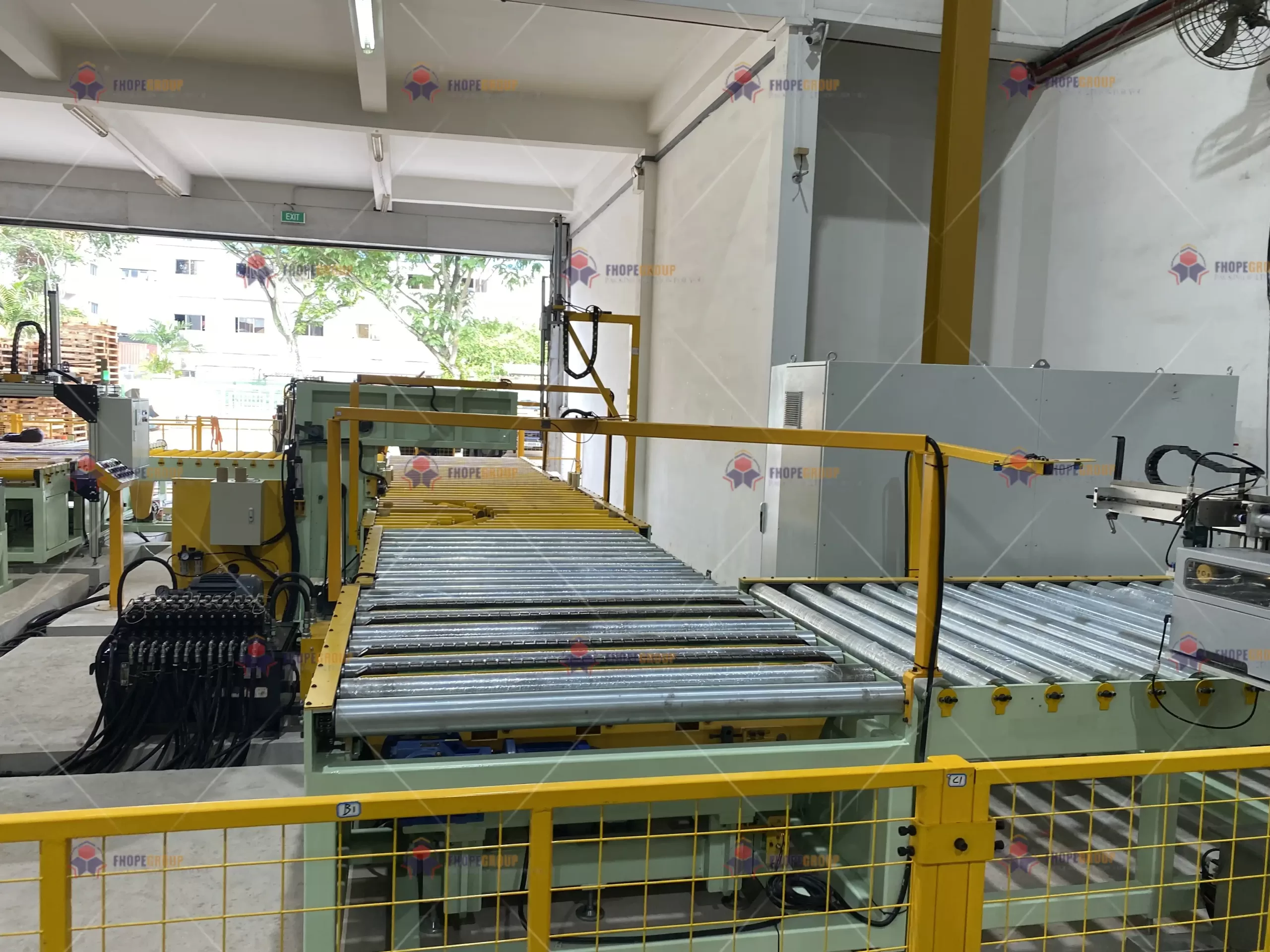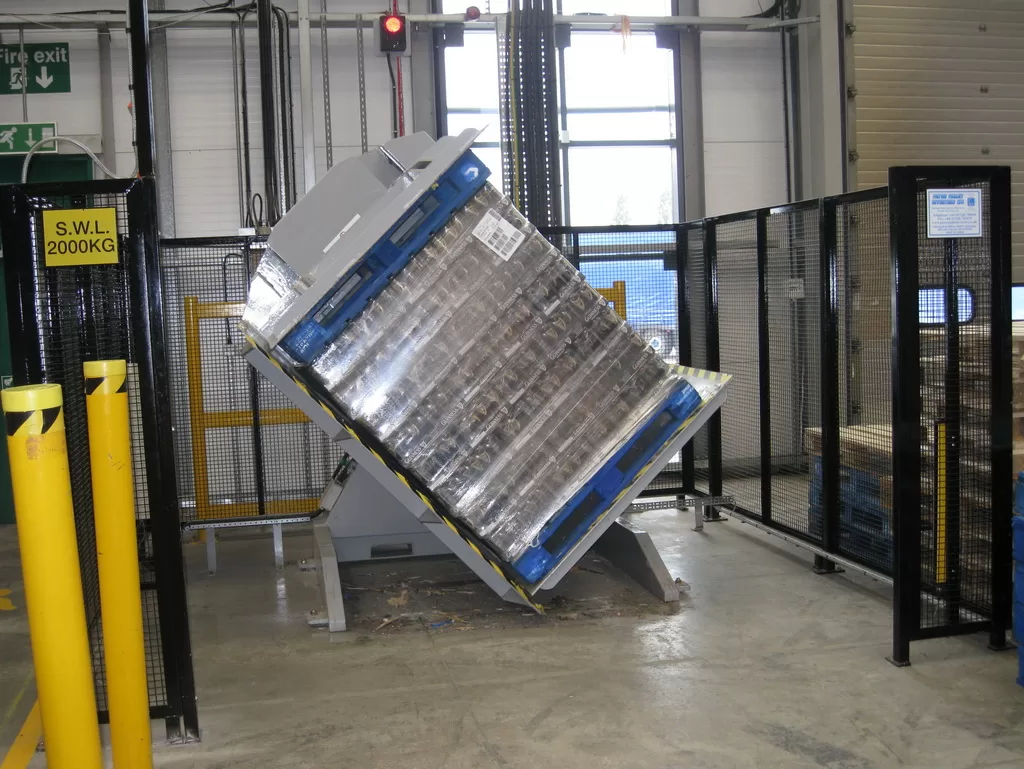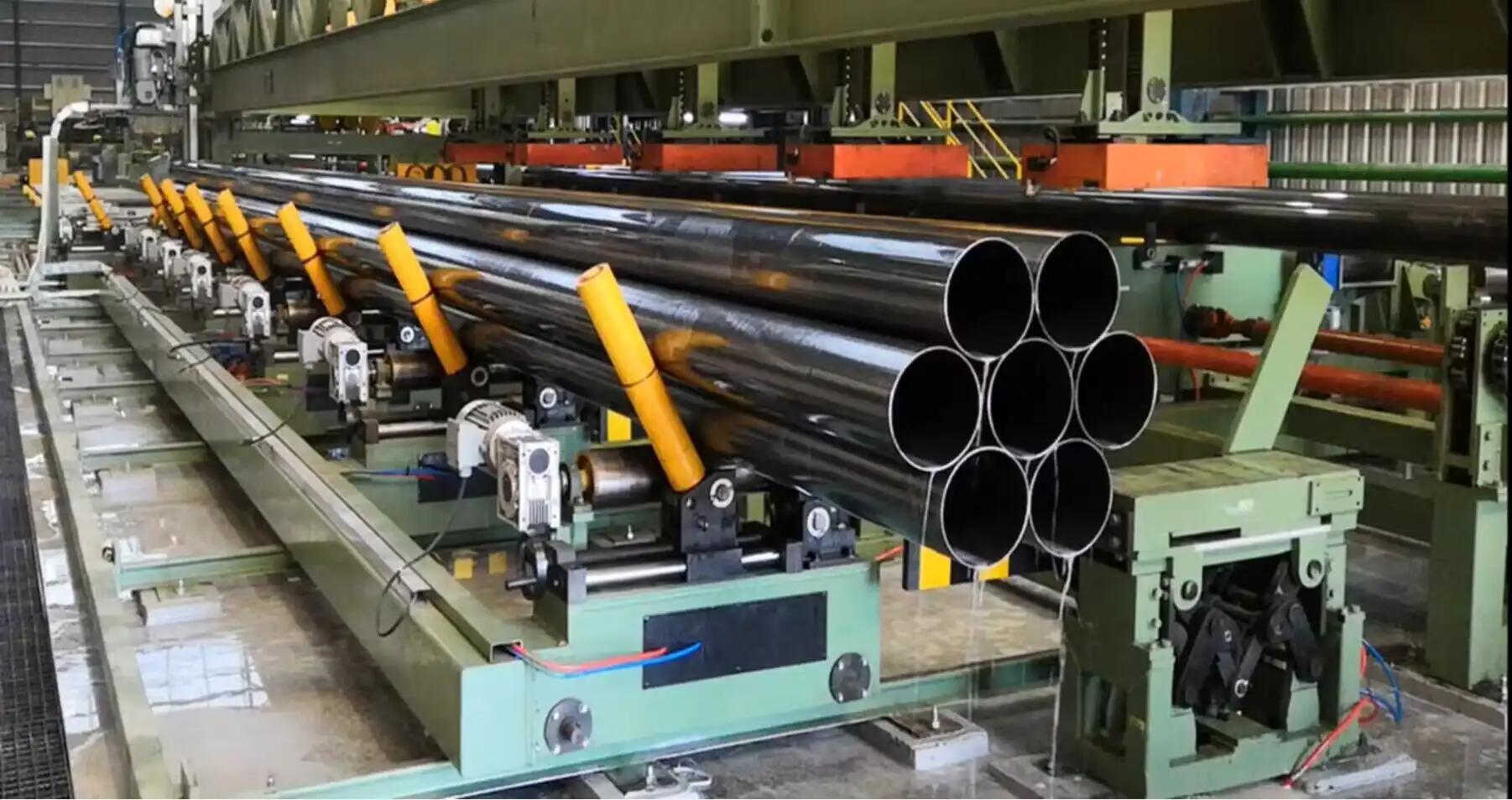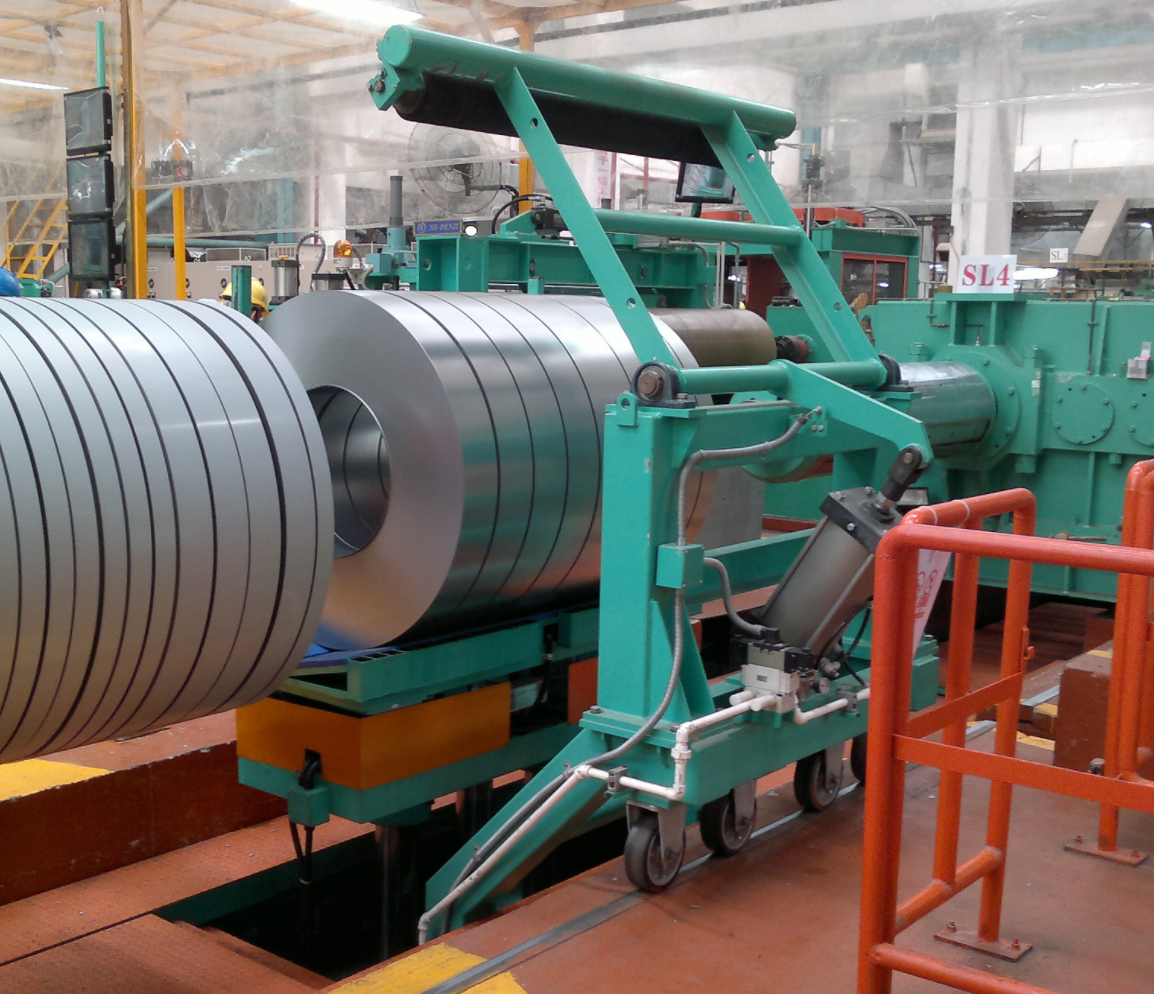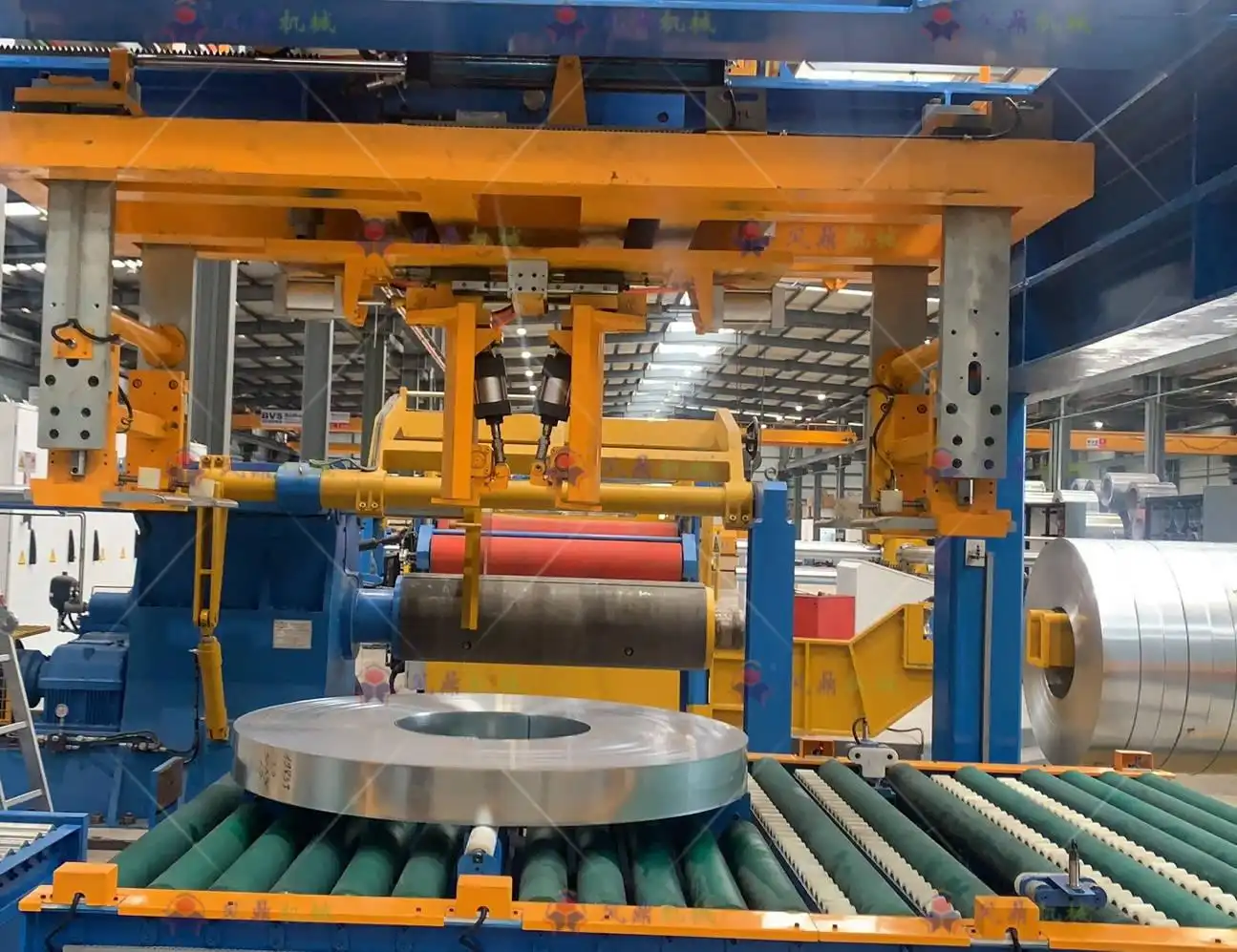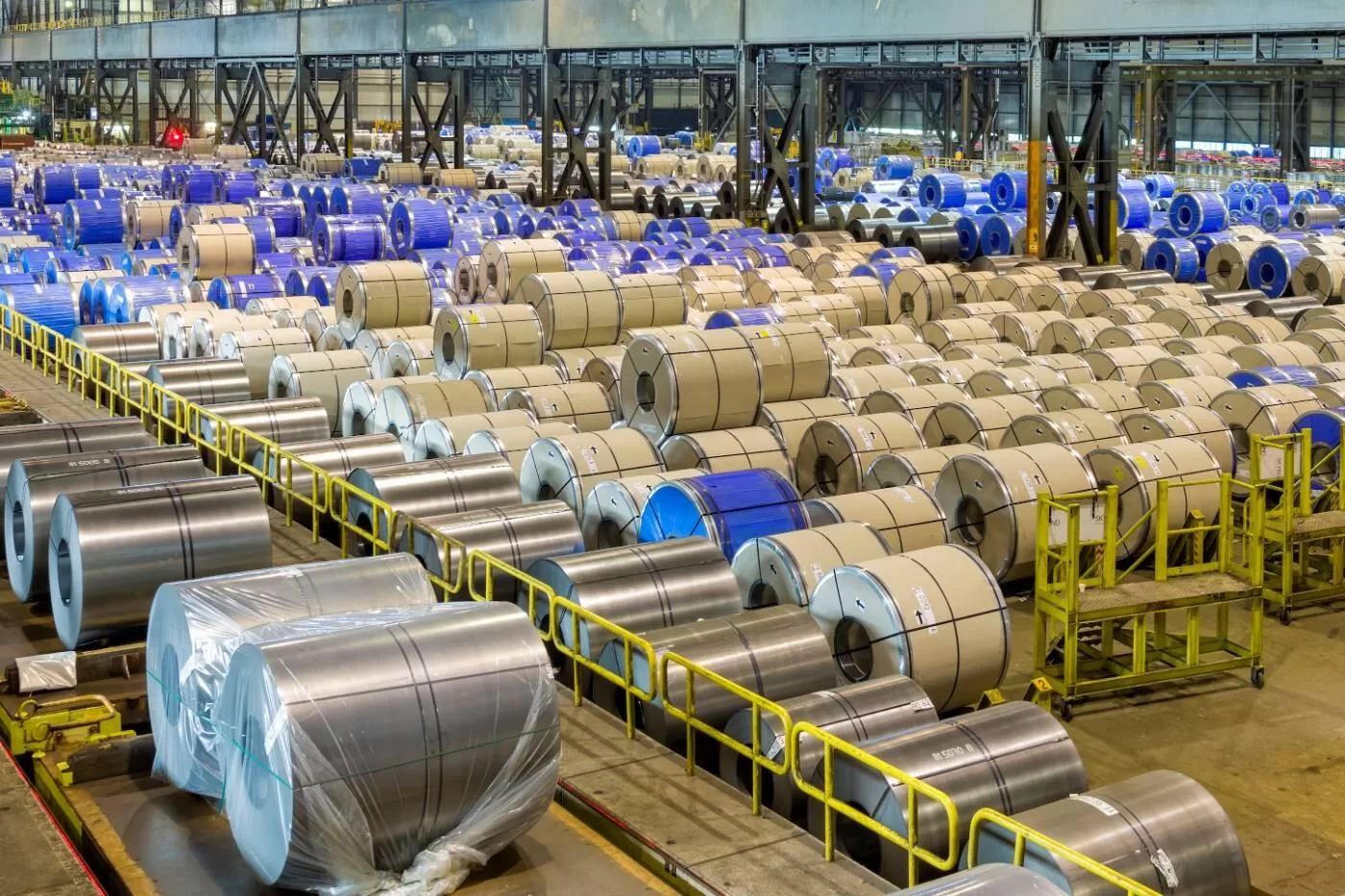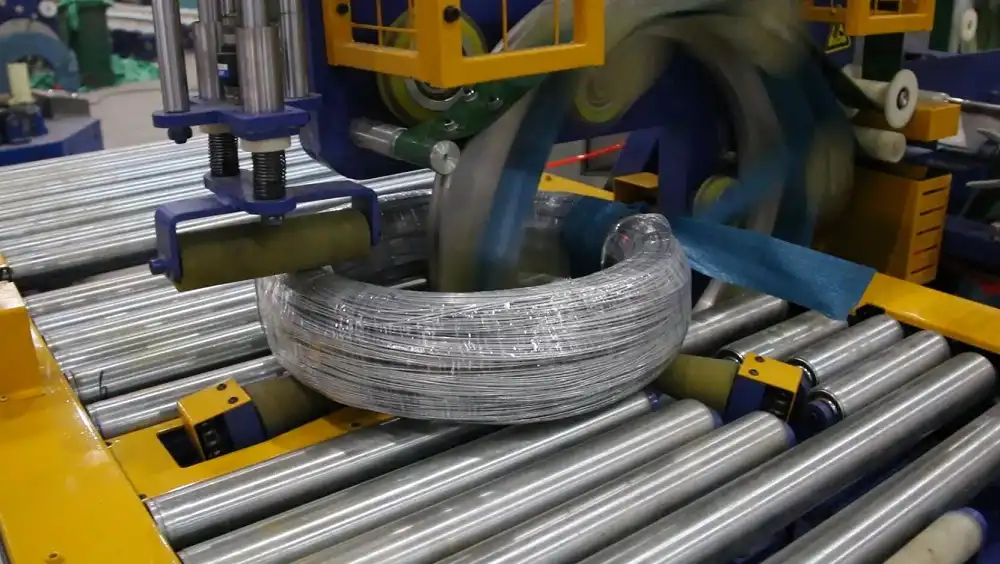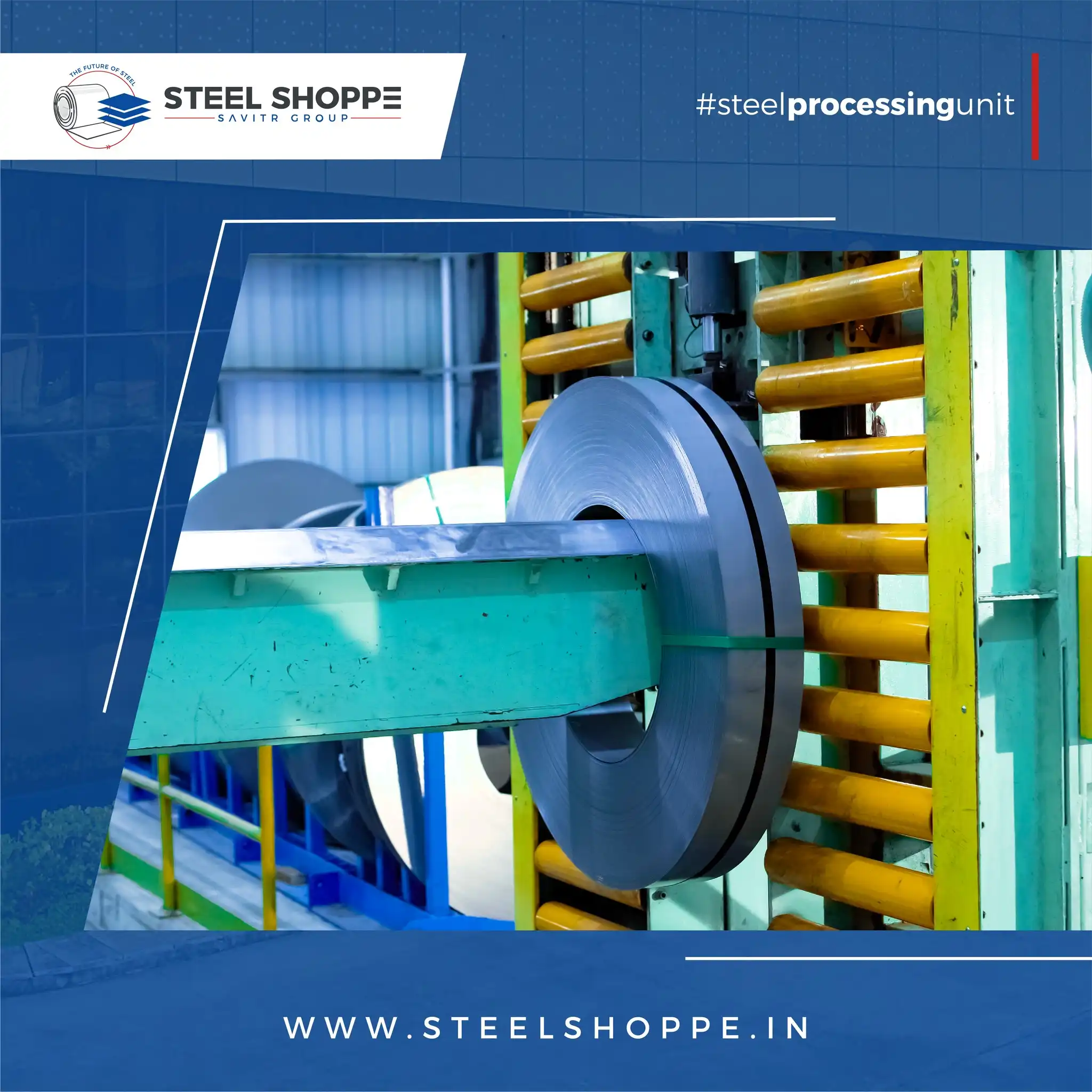The Role of Coil Storage Racks in Preventing Damage During Handling
Handling and storing heavy metal coils presents significant challenges: costly damage, safety risks, and inefficient space utilization. Traditional methods often fall short, leaving valuable materials vulnerable and workers exposed to hazards. Discover how specialized coil storage racks provide an indispensable solution, dramatically reducing damage during both storage and handling operations.

Coil storage racks are crucial in preventing damage during handling by providing stable, customized cradles that securely support the coil’s core and shape, preventing deformation, flattening, and rolling. Integrated features like internal cores and skinned exteriors offer additional protection from impacts and movement. Their robust design allows for safe and controlled handling via forklifts or cranes, dramatically reducing the risk of costly material damage during transport and storage maneuvers.
Understanding the specific mechanisms and benefits of coil storage racks is key to implementing a storage strategy that not only protects your investment but also enhances overall operational efficiency and safety. Let’s delve deeper into the critical aspects that make these systems indispensable in modern industrial environments.
Engineered Protection: How Coil Racks Safeguard Your Valuable Materials
Heavy metal coils represent a significant investment and are surprisingly vulnerable to damage from improper handling and storage. Impacts, inadequate support, or crushing forces can cause costly deformation. Standard storage solutions often fall short, leaving this valuable inventory exposed. Engineered coil storage racks are specifically designed with features that actively protect materials from damage during every phase of handling.
Engineered coil storage racks utilize specific design elements to prevent damage. Custom cradles conform to the coil’s shape, distributing weight evenly and preventing deformation. Skinned exteriors provide a protective shell against impacts and environmental exposure. Integrated latches and internal cores secure coils, preventing potentially damaging movement during handling. Built with heavy-duty steel, the rack frame offers structural protection. These combined features significantly safeguard valuable materials throughout the handling lifecycle, from placement to retrieval.
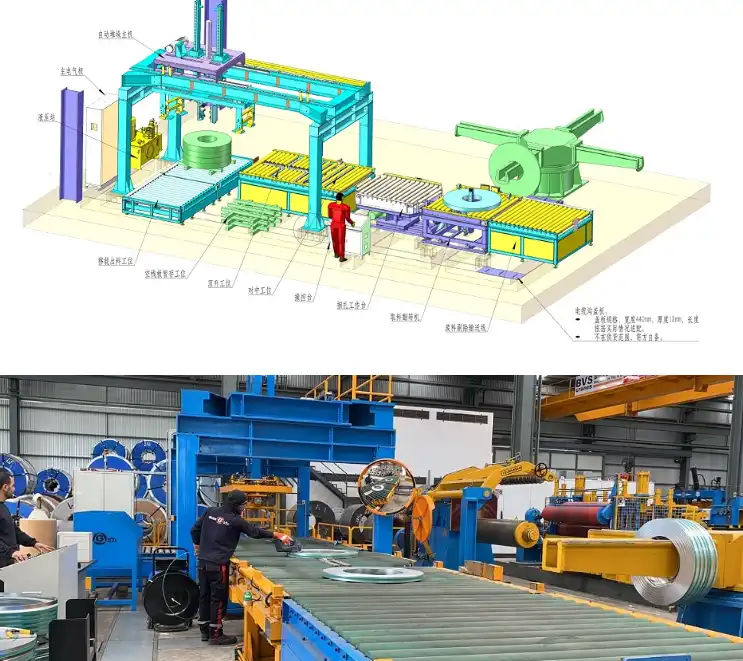
Key Features and Their Protective Functionality
The design of coil storage racks goes far beyond simple support; it incorporates specific engineering features aimed at shielding the valuable contents. These features are crucial for preventing the various types of damage that can occur during handling, including flattening, denting, scratching, and core deformation. By providing a stable, secure, and protected environment, coil racks ensure materials remain in optimal condition for their intended use.
Let’s examine some of the critical components and how they contribute to damage prevention:
Customized Coil Cradles
At the heart of most coil rack designs are the customized cradles. These are specifically shaped to accept and support the cylindrical form of coils, distributing the immense weight evenly along the coil’s width. This uniform support prevents the coil from flattening under its own weight, which is a common issue with floor stacking or inadequate racking. The cradles also feature internal cores or designs that prevent the coil from "hopping" or rolling out of position, particularly during loading or when the rack is moved. Customization allows cradles to be sized precisely for the specific diameters and weights of the coils being stored, ensuring a snug and secure fit.
Skinned Exterior Enclosure
A key feature, especially in enclosed or portable coil containers, is the skinned exterior. This outer shell acts as a protective barrier, completely enclosing the metal coils. This enclosure shields the coils from accidental impacts from forklifts, other materials, or environmental factors like dust, moisture, or debris. Preventing surface damage like scratches or dents is vital, as these can affect the material’s usability in downstream processes, especially in industries requiring high surface finish quality. The skinned exterior also helps to maintain a more stable internal environment, protecting sensitive materials from the elements.
Integrated Latches and Internal Core Designs
Securing the coil within the rack is paramount, particularly when the racks are portable or stacked. Integrated latches and specialized internal core designs work together to hold the coil firmly in place without the need for external strapping, which can sometimes damage coil edges. The internal core design helps prevent the coil from shifting or rolling within the cradle, a critical factor during acceleration, deceleration, or turns during transport. This internal stability minimizes movement that could lead to impact damage against the rack structure or adjacent coils.
Structural Integrity and Stacking Capabilities
Coil racks are built using heavy-duty, industrial-grade steel tubing and components. This robust construction is essential for supporting the extremely high load capacities – often ranging from 2,000 lbs up to 80,000 lbs or more per coil. The structural integrity prevents the rack itself from deforming or failing under load, which could lead to catastrophic damage to the coils. Unique stacking pins or interlocks on the frame corners ensure that when racks are stacked vertically, they are perfectly aligned and stabilized, preventing shifting, tilting, or collapse of the stack. This vertical stability is crucial for preventing damage from stack failure.
Protective Finish
Most quality coil racks feature a powder coat finish. While primarily for aesthetics and corrosion resistance, preventing rust and degradation of the rack structure indirectly protects the coils. A corroding rack could potentially transfer rust or debris to the coil surface. The durable finish ensures the rack maintains its integrity and smooth surfaces, reducing the risk of snagging or scratching during loading and unloading.
| Feature | Description | Primary Damage Prevention Mechanism | Secondary Benefits |
|---|---|---|---|
| Customized Cradles | Shaped supports conforming to coil diameter | Prevent flattening, deformation, and core damage; provide stable base | Facilitate loading/unloading; specific coil fit |
| Skinned Exterior | Full or partial outer enclosure | Protect from impacts, scratches, dust, environmental exposure | Security, environmental protection |
| Integrated Latches/Core | Internal securing mechanisms | Prevent rolling, shifting, and movement during handling | Reduce need for external strapping; worker safety |
| Heavy-Duty Steel Frame | Robust industrial-grade steel construction | Provide structural support; prevent rack failure under load | Longevity, durability, high load capacity |
| Stacking Pins/Interlocks | Corner connections for stacked units | Stabilize vertical stacks; prevent shifting and collapse | Maximize vertical space utilization |
| Powder Coat Finish | Durable surface coating | Prevent rust/corrosion of rack; protect coil surface from transfer | Aesthetics, extended rack lifespan |
These engineered features work in concert to create a storage and handling system that actively minimizes the risks of damage inherent in working with heavy, cylindrical materials.
Beyond Storage: Enhancing Workplace Safety and Handling Efficiency
Safe handling of heavy coils goes hand-in-hand with proper storage. Unstable piles or difficult-to-access coils significantly increase the risk of accidents, delays, and worker injuries. Coil storage racks address these challenges directly, transforming handling operations from hazardous endeavors into streamlined, safe processes, improving both worker well-being and operational throughput.
Coil racks drastically improve safety and handling efficiency. They eliminate the hazards of unstable stacks and rolling coils by providing secure, individual cradles. Designated access points and optimized layouts facilitate controlled movement with lifting equipment, reducing the risk of impacts and dropped loads. This streamlined access and organization minimizes handling time and effort, leading to safer workflows and increased productivity for warehouse personnel.
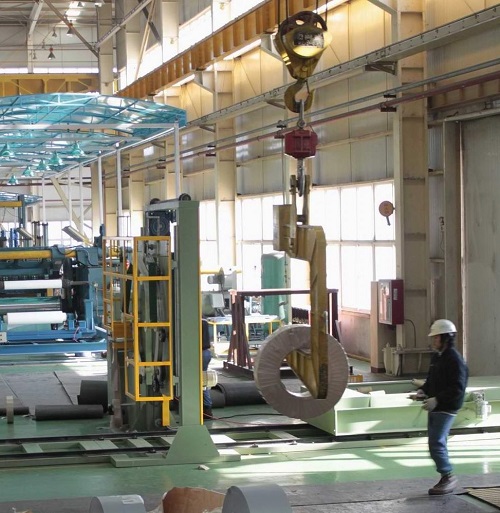
Streamlining Operations and Protecting Personnel
The benefits of specialized coil storage racks extend significantly into the realm of operational efficiency and, crucially, workplace safety. Improperly stored coils are not just at risk of damage; they represent a constant hazard to personnel and equipment. Traditional methods like pyramid stacking, while seemingly space-efficient, are inherently unstable and require careful management and securing (strapping, chocking) to mitigate the risk of unexpected movement or collapse.
Coil storage racks fundamentally change this dynamic. By providing a secure, designated location for each coil, the risk of rolling or tipping is drastically reduced. The racks are designed to contain the coils securely within their structure, even if subjected to external forces. This inherent stability is a primary driver of enhanced safety, preventing accidents that can lead to severe injuries, equipment damage, and significant downtime.
Furthermore, coil racks are designed with material handling in mind. Features like 2-way or 4-way fork truck entry facilitate easy and controlled access for loading and unloading coils using specialized attachments like coil rams, booms, or forks. This ease of access minimizes the need for awkward maneuvering and reduces the risk of operators bumping into racks or adjacent coils, which could cause damage or instability. The ability to retrieve coils quickly and efficiently also streamlines the workflow, reducing the amount of time personnel and equipment spend in potentially hazardous areas.
The organized nature of racked storage contributes to clearer aisles and better visibility within the warehouse, further reducing the risk of collisions. By minimizing manual handling and relying on appropriate lifting equipment, coil racks help prevent musculoskeletal injuries associated with trying to manually control or manipulate heavy coils. Compliance with safety standards, such as those outlined by OSHA and ANSI MH16.1, is also easier to achieve with properly designed and installed racking systems, helping businesses avoid fines and demonstrate a commitment to a safe work environment.
The combination of inherent structural stability, controlled access points, and improved organization means that handling coils becomes a more predictable and safer process. This leads to fewer accidents, lower insurance premiums, reduced worker’s compensation claims, and ultimately, a more productive and secure workplace. Industries like automotive, construction, and metal distribution, where large, heavy coils are commonplace, benefit immensely from this shift from hazardous improvisation to engineered safety. The investment in coil racks is not just about protecting materials; it’s a critical investment in the safety and well-being of the workforce and the overall efficiency of the operation.
Maximizing Space and Streamlining Inventory with Vertical Storage
Are cumbersome coil stacks consuming your warehouse floor, making retrieval difficult and inventory management a nightmare? This inefficient use of space and lack of organization directly impacts productivity and profitability. Unlock the potential of your facility by implementing vertical coil storage racks designed to maximize space utilization and bring order to your inventory operations.
Coil storage racks significantly optimize warehouse space by enabling high-density vertical stacking, storing multiple coils within a small footprint and freeing up floor area. Their structured, modular design provides designated locations for each coil, streamlining inventory management, facilitating easy identification, and supporting efficient retrieval using FIFO or LIFO methods, thus improving organizational flow and reducing search time.
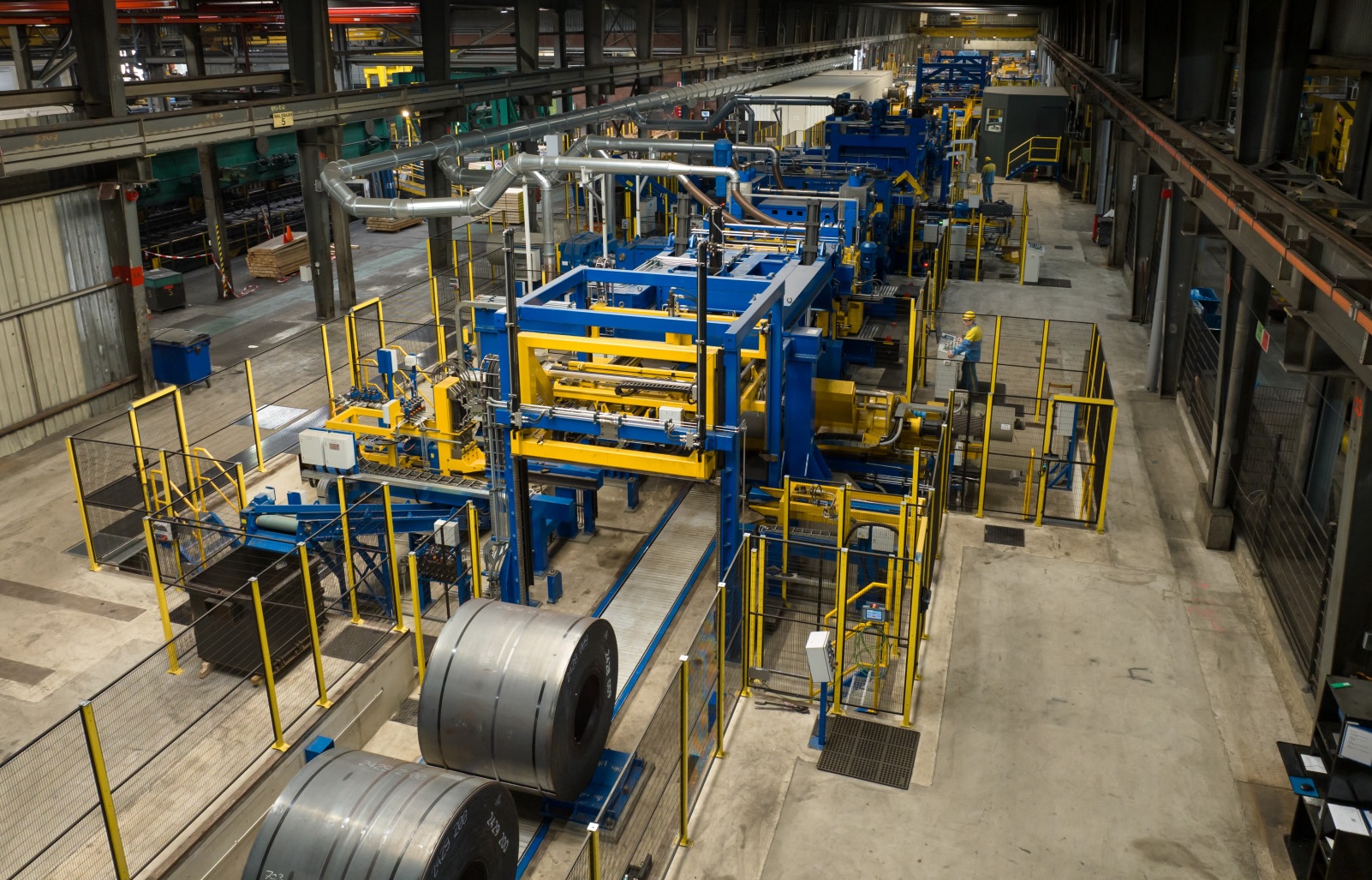
Strategic Design for High-Density Storage and Efficient Tracking
One of the most compelling advantages of coil storage racks, beyond damage prevention and safety, is their ability to dramatically improve space utilization within a warehouse. Traditional floor storage methods, particularly for large coils, consume vast amounts of valuable floor space. Pyramid stacking requires significant horizontal area for the base, and accessing coils in the middle or bottom of a stack is often difficult and risky. This "Last-In, First-Out" (LIFO) approach common with floor stacking also hinders proper inventory rotation and access to specific stock.
Coil racks are specifically designed for vertical storage, capitalizing on the unused cubic space within a facility. Their robust construction and integrated stacking pins allow racks, each holding one or multiple coils, to be safely stacked several levels high – commonly 5 to 7 racks or more, depending on the coil weight and rack design. This high-density vertical storage capability means that the same number of coils can be stored in a fraction of the floor space required by traditional methods. The floor area that is freed up can then be reallocated for production machinery, staging areas, or other essential operations, significantly increasing the overall capacity and efficiency of the facility without the need for costly expansion.
Furthermore, the modular nature of coil racks supports efficient inventory management. Each rack or specific slot within a multi-coil rack serves as a designated location for a particular coil. This structured approach makes it easy to implement systematic labeling and inventory tracking. Unlike disorganized floor stacks where coils can be hard to identify or access, racked storage provides clear visibility and accessibility to each unit. This organization facilitates accurate inventory counts, reduces search time, and enables businesses to easily implement a "First-In, First-Out" (FIFO) system if required, which is crucial for materials with shelf lives or those where age can affect quality.
The ease of access provided by the rack design also streamlines retrieval processes. Forklifts with appropriate attachments can easily enter the racks to pick or place specific coils without disturbing others in the stack. This selective access is a major improvement over floor stacks where accessing anything other than the top coil can be a complex and time-consuming operation often requiring the entire stack to be disassembled and reassembled, increasing handling and damage risk.
| Factor | Traditional Floor Storage (Pyramid) | Coil Rack Storage (Vertical) | Impact on Operations |
|---|---|---|---|
| Space Utilization | High Floor Footprint Required | Low Floor Footprint, High Vertical Stacking | Frees up floor space for production/other |
| Density | Low (per sq ft) | High (per sq ft) | Increased overall storage capacity |
| Inventory Method | Primarily LIFO | Supports FIFO or LIFO | Better stock rotation, less material aging |
| Accessibility | Limited (especially lower coils) | High (selective access per slot/rack) | Reduced retrieval time, improved workflow |
| Inventory Accuracy | Difficult to count | Easier tracking and auditing | Improved inventory control, reduced errors |
| Flexibility | Static, hard to reconfigure | Modular, adaptable to coil size/quantity | Adjusts to changing inventory needs |
By strategically leveraging vertical space and implementing a structured, organized storage system, coil racks significantly enhance both the capacity and efficiency of warehouse operations, turning previously cluttered areas into highly functional storage zones.
Investing Wisely: Cost Efficiency and Selecting the Optimal Coil Rack Solution
While custom coil storage racking systems may represent a higher initial investment compared to simply stacking coils on the floor, their long-term cost efficiencies and benefits far outweigh the upfront expenditure. These systems contribute to profitability not just by enabling storage, but by actively reducing costs associated with material damage, inefficient labor, and operational downtime. Furthermore, the inherent design of these racks—featuring stable cradles that support the coil’s core and shape, preventing deformation or flattening, alongside protective elements like skinned exteriors and internal cores—is paramount. These features specifically prevent damaging movement and impacts during transit and storage within the facility, directly addressing the primary concern of material damage during handling.
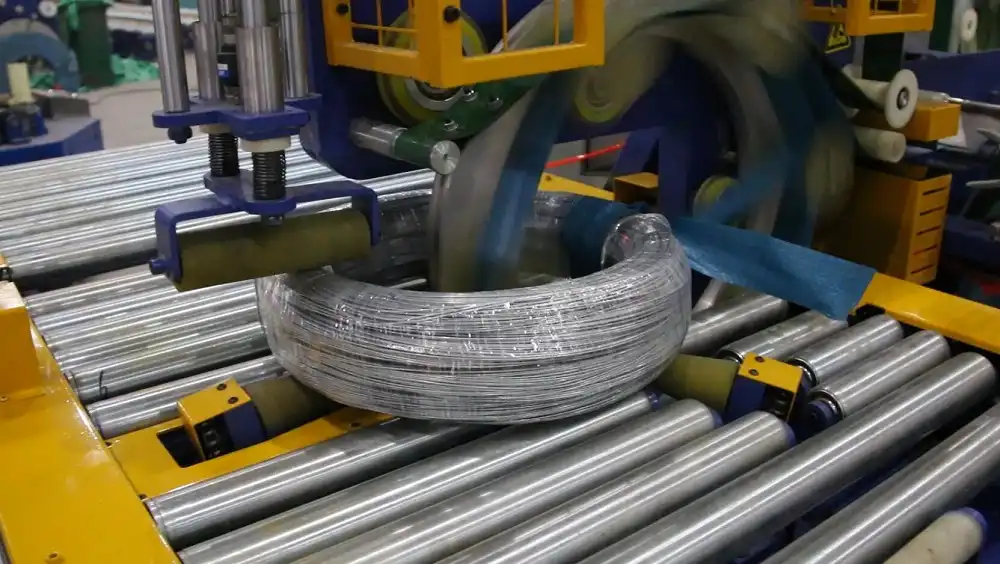
The ROI from implementing coil storage racks is multifaceted. The most direct saving comes from the significant reduction in material damage. Damaged coils, whether from flattening, denting, or scratching, often result in scrapped material, rework, or discounted sales – all representing lost revenue and wasted resources. By protecting the coil’s integrity, racks ensure the material remains usable, preserving its full value.
Beyond material savings, operational costs are also reduced. The streamlined workflow and easy accessibility enabled by coil racks lead to lower labor costs. Workers spend less time searching for specific coils and handling them is faster and safer, reducing the total labor hours required for storage and retrieval. Minimized downtime is another critical factor; fewer accidents mean less interruption to operations, and faster material access keeps production lines or distribution processes moving smoothly.
Selecting the right coil racking system requires careful consideration to ensure the investment aligns with specific needs and provides the maximum return. Key factors include the dimensions and weight range of the coils to be stored (racks must be engineered to safely handle the maximum anticipated load), the available vertical and horizontal space in the facility, the type of material handling equipment currently in use (forklifts, cranes, with specific attachments), and future growth projections for inventory. Reputable suppliers specialize in customized solutions, understanding that a one-size-fits-all approach rarely works for diverse coil types and industry-specific needs. They can design systems tailored to weight capacities (from 2,000 to 80,000+ lbs), coil sizes, access requirements (2-way vs. 4-way entry), and environmental conditions (e.g., powder coat for standard environments, specialized coatings for harsh conditions). Engaging with experts ensures the chosen system is structurally sound, compliant with safety standards, and optimized for the specific operational flow. Investing in a tailored, heavy-duty coil rack solution is a strategic business decision that pays dividends through enhanced material protection, improved safety, greater efficiency, and optimized space utilization.
Conclusion
Coil storage racks are indispensable assets for industries handling coiled materials. Their specialized design actively prevents damage during both storage and handling, safeguarding valuable inventory from deformation and impacts. Beyond protection, they significantly enhance workplace safety by eliminating hazardous stacking methods and improving material accessibility. Coil racks also maximize warehouse space through vertical stacking and streamline inventory management, leading to substantial operational efficiencies and long-term cost savings. For optimized operations, investing in tailored coil stacking systems is a strategic necessity.

